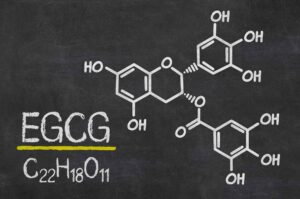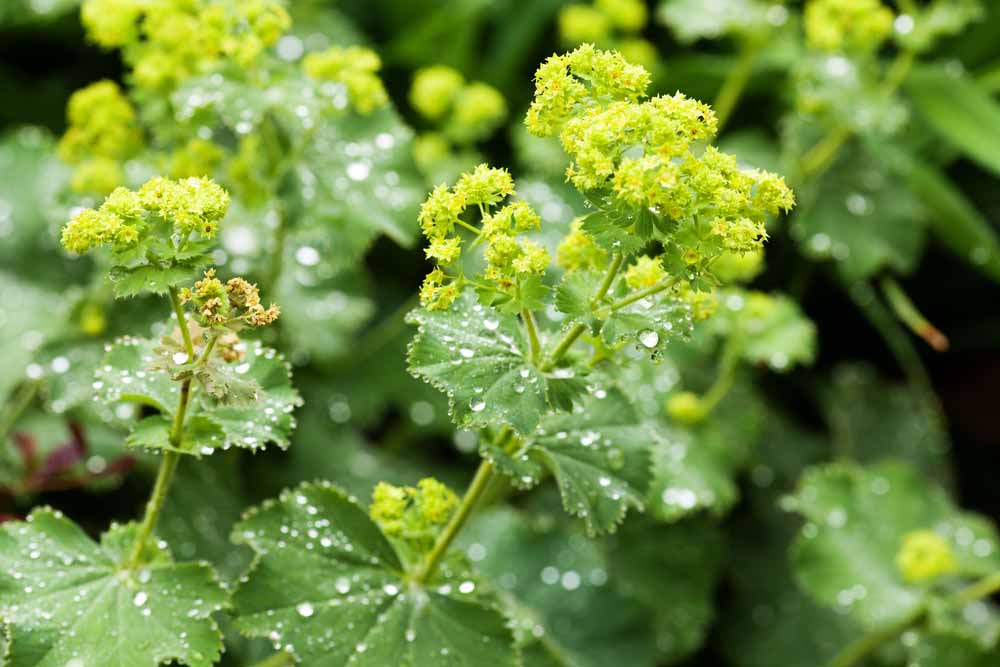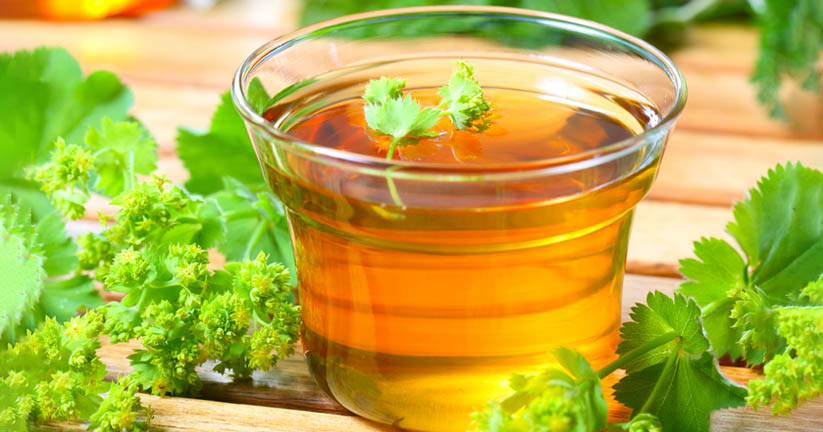Green Tea & Lady’s Mantle: The Revolutionary Blend in Natural Wellness
Author: Nina Devrnja, PhD in Biology
Nature’s Pharmacy
Over the last hundred years, scientific progress, pharmacognosy studies, and technological evolution have allowed the discovery of numerous biologically active new molecules from medicinal plants and elucidated their mechanism of action. Medicinal plants have been recognized as an inexhaustible source of bioactive compounds with therapeutic potential that become increasingly important in pharmacy. As a consequence, classical medicine has been faced with some changes regarding the decrement of mono-substance therapy in favour of the drug combinations, so-called multidrug therapy. The fact that plants possess a complex mixture of active components with polypharmacological action and synergistic effects, enables the diverse plant extracts to become significant agents in multitarget therapy of a vast number of diseases (1).
Free radicals and antioxidants
Modern scientific research has confirmed that plant extracts are targeted principally toward the activation of defence and repair mechanisms of the body rather than toward the direct destruction of harmful agents. Free radicals could be the harmful agents in our body, the unstable oxygen-containing molecules that are made during normal cell metabolism. These molecules are very reactive toward other molecules like proteins, DNA, lipids, etc. causing their oxidation. Oxidation is a process that normally occurs in the human body but when there is an imbalance between free radicals and antioxidants oxidative stress emerges when free radicals start doing damage. The involvement of oxidative stress in the pathogenesis of a large number of diseases is well documented. The main system for free radical scavenging and the regeneration of damaged cells in the body involves antioxidants, which curb the effect of free radical molecules.

Recently, there has been an increase in interest in the therapeutic potentials of medicinal plants as antioxidants. Antioxidants include dozens of food-based substances you may have heard of before, but polyphenols are the most abundant antioxidant in plants and have an excellent ability to capture oxidative free radicals (2). Consumption of foods or beverages rich in antioxidants is therefore essential for human health, strengthening the immune system as well as prolonging life and delaying the ageing process. Generally, these natural antioxidants, especially polyphenols, and carotenoids, exhibit a wide range of biological effects, such as anti-inflammatory, antibacterial, antiviral, anti-ageing, and anticancer. Along with the food rich in antioxidants like wild blueberries, pecans, artichokes, cranberries, blackberries, and so on, there is a recommendation for getting antioxidants from a wide variety of sources like herbs or supplements. Some of the top antioxidant-rich herbs include clove, cinnamon, green tea, oregano, turmeric, cumin, basil, ginger, thyme, etc. Anyway, if you’re at health risk for something like cardiovascular disease, cognitive problems, toxification, or dysmenorrhea, talk to your health professional about whether the antioxidant supplements in proper doses might be helpful…
EGCG as a powerful source of natural antioxidants
One of the powerful natural antioxidants that can be taken as a food supplement is epigallocatechin-3-gallate (EGCG), a dominant polyphenol extracted from green tea. Extraction of EGCG from green tea preserves its biological activity and provides a source of high-quality polyphenols. Since extensive research has shown that EGCG has strong antioxidant, anti-inflammatory, antimicrobial, and antitumor potential as well as neuroprotective and cardiovascular properties, it is important to invest in natural substances with such traits that could enhance the health of the population (3,4,5,6).

Additionally, scientific literature on antioxidant therapy suggests that the properties of antioxidants could be beneficial for some health challenges affecting women’s health.
Some previous studies showed that EGCG may reduce endometriosis-related symptoms (7, 8). A pilot double-blinded placebo-controlled clinical trial evaluates the efficacy and safety of oral green tea extract (EGCG) treatment in reproductive-age women with symptomatic uterine fibroids (UFs) and concludes that EGCG shows promise as a safe and effective therapeutic agent for women with symptomatic UFs (9). Such a simple, inexpensive, and orally administered therapy could potentially have a major positive impact on the reproductive health of women.
Lady’s mantle and its benefits
Lady’s Mantle, Alchemilla vulgaris, is a true friend to the female reproductive system and hormone balancing. It is a perennial herbaceous plant found throughout Europe, belonging to the rose family. The first description of a lady’s mantle dates back to 1539 when the German botanist and physician Hieronymus Bock described this species. The plant was highly respected by the ancient German tribes and was devoted to Frigg, the goddess of beauty and fertility.
The Lady’s mantle is a very popular and acknowledged medicinal plant, which is traditionally used in folk medicine and a range of herbal remedies. The scientific basis for the use of the lady’s mantle in folk medicine was given by the European Scientific Cooperative on Phytotherapy (ESCOP) in its monograph, which confirms a number of its pharmacological properties.

Lady’s Mantle has a balancing, regulating and protective effect on the entire female organism. If you ask a herbalist about the health benefits of lady’s mantle, you will likely hear something about the use of lady’s mantle as a natural remedy for menstrual problems or other hormone-dependent conditions affecting women. Traditionally, it is used to prophylactically treat all kinds of menstrual disorders. For centuries, European women have been using lady’s mantle to relieve PMS symptoms, cramping and menopausal complaints such as hot flashes and mood swings. The herb is mostly used for preventing menstrual problems, amenorrhoea (the absence of menstruation), the oligomenorrhea (light or infrequent menstruation), the dysmenorrhea (severe, frequent cramping during menstruation) and menorrhagia (menstrual flow that lasts longer and is heavier than normal). Hormonal imbalance is one of the most common causes for menstrual cramps. It regenerates the uterus, strengthens and fosters uterine ligaments and endometrium (the inner lining of this organ), and by stimulating microcirculation in the ovaries it facilitates regular ovulation. Lady’s Mantle act as good hormonal balancer and thus remove the unwanted symptoms of such imbalance. It contains tannins, flavonoids, bitters, phytosterol, glycosides and saponins. This chemical composition acts similarly to the female sexual hormone progesterone, which explains why it is so deeply involved in phototherapy in gynaecology. Progesterone-like activity of Lady’s mantle regulates hormone levels in the first half of the menstrual cycle and in the second half of the menstrual cycle it prevents premenstrual mood swings and period pains.
Lady’s mantle and EGCG-stronger together
In general, the presence of different types of polyphenol compounds extracted from the same or various plant material well correlates with numerous biological activities. The synergism of these compounds in multicomponent herbal preparations refers to the effect exceeding the sum of individual components, and can be explained by specific modes in which different types of antioxidant compounds retard or inhibit oxidation reactions. It is well known that the synergistic antioxidant activity of various antioxidants present in the optimized mixture can, more effectively or at lower doses, prevent or treat the various problems caused by oxidative damage.
Lady’s mantle extract can be a powerful synergist to green tea extract in challenges affecting women’s health, especially the menstrual cycle. One study including 1,183 women noted that drinking green tea was related to decreased menstrual pain compared with drinking other types of tea. Consumptions of green tea were associated with a lower prevalence of dysmenorrhea. Additionally, green tea is full of antioxidant compounds like EGCG and has anti-inflammatory effects that may help reduce bloating. Let’s not forget that green tea has theanine that elevates mood and calms your nerves, which is beneficial during the PMS period.
Respecting the above-mentioned, it might be that the EGCG from green tea and extract from a lady’s mantle is the perfect match made in nature when it comes to women’s health issues.
The statements made within this website have not been evaluated by the U.S. Food and Drug Administration. These statements and the products of this company are not intended to diagnose, treat, cure or prevent any disease. Follow the CDC Guidelines
Legal Disclaimer
Please consult your physician before implementing any new diet, exercise and dietary supplement programs, especially if you have pre existing medical conditions or are taking prescribed medications. The statements made on this website are for educational purposes only and are not meant to replace the advice of your physician or healthcare provider.
References:
- Gibbons, S. (2003). An overview of plant extracts as potential therapeutics, Expert Opinion on Therapeutic Patents 13(4): 489– 497.
- Jiang, T., Sun, Q., and Chen, S. (2016). Oxidative stress: a major pathogenesis and potential therapeutic target of antioxidative agents in Parkinson’s disease and Alzheimer’s disease. Prog. Neurobiol. 147, 1–19.
- Ahn, W.-S., Yoo, J., Huh, S.W., Kim, C.-K., Lee, J.-M., Namkoong, S.- E., Bae, S.-M., Lee, I.P., 2003b. Protective effects of green tea extracts (polyphenon E and EGCG) on human cervical lesions. Eur. J. Cancer Prev. 12, 383–390.
- Ohishi T, Goto S, Monira P, Isemura M, Nakamura Y. Anti-inflammatory Action of Green Tea. Antiinflamm Antiallergy Agents Med Chem. 2016;15(2):74-90.
- Shin CM, Lee DH, Seo AY, Lee HJ, Kim SB, Son WC, Kim YK, Lee SJ, Park SH, Kim N, Park YS. Green tea extracts for the prevention of metachronous colorectal polyps among patients who underwent endoscopic removal of colorectal adenomas: A randomized clinical trial. Clinical Nutrition. 2018 Apr 1;37(2):452-8.
- Scandlyn MJ, Stuart EC, Somers-Edgar TJ, Menzies AR, Rosengren RJ: A new role for tamoxifen in oestrogen receptor-negative breast cancer when it is combined with epigallocatechin gallate. Br. J. Cancer 2008, 99: 1056-1063.
- Matsuzaki S, Darcha C (2014). Antifibrotic properties of epigallocatechin3-gallate in endometriosis. Hum Reprod. 2014, 29: 1677-1687.
- Wang CC, Xu H, Man GC, Zhang T, Chu KO, Chu CY, Cheng JT, Li G, He YX, Qin L, Lau TS, Kwong J, Chan TH. Prodrug of green tea epigallocatechin-3-gallate (Pro-EGCG) as a potent anti-angiogenesis agent for endometriosis in mice. Angiogenesis. 2013, 16: 59-69.
- Roshdy E, Rajaratnam V, Maitra S, Sabry M, Allah AS, Al-Hendy A. Treatment of symptomatic uterine fibroids with green tea extract: a pilot randomized controlled clinical study. Int J Womens Health. 2013, 5: 477-86. doi:10.2147/IJWH.S41021.
- K. Ghedira, P. Goetz and R. L. Jeune, Alchemilla vulgaris, Phytothérapie, 2012, 263–266
- Pizzorno J. Murray M, Joiner-Bey H. Infertility, female. Editor(s): Joseph E. Pizzorno, Michael T. Murray, Herb Joiner-Bey. The Clinician’s Handbook of Natural Medicine (Third Edition). Churchill Livingstone, 2016, 485-520
- Shilova, I. V., Suslov, N. I., Samylina, I. A., Baeva, V. M., Lazareva, N. B. and Mazin, E. V. (2020). Neuroprotective properties of common lady’s mantle infusion, Pharmaceutical Chemistry Journal 53(11): 1059–1062.
- Krivokuc ́a, M., Niketic ́, M., Milenkovic ́, M., Golic ́, N., Masia, C., Scaltrito, M. M., Sisto, F. and Kundakovic ́, T. (2015). Anti-Helicobacter pylori activity of four Al- chemilla species (Rosaceae), Natural Product Communications 10(8): 1934578X1501000.
- Shrivastava R, John GW. Treatment of aphthous stomatitis with topical Alchemilla vulgaris in glycerine. Clin Drug Investig 2006;26:567-73.



FOLLOW US